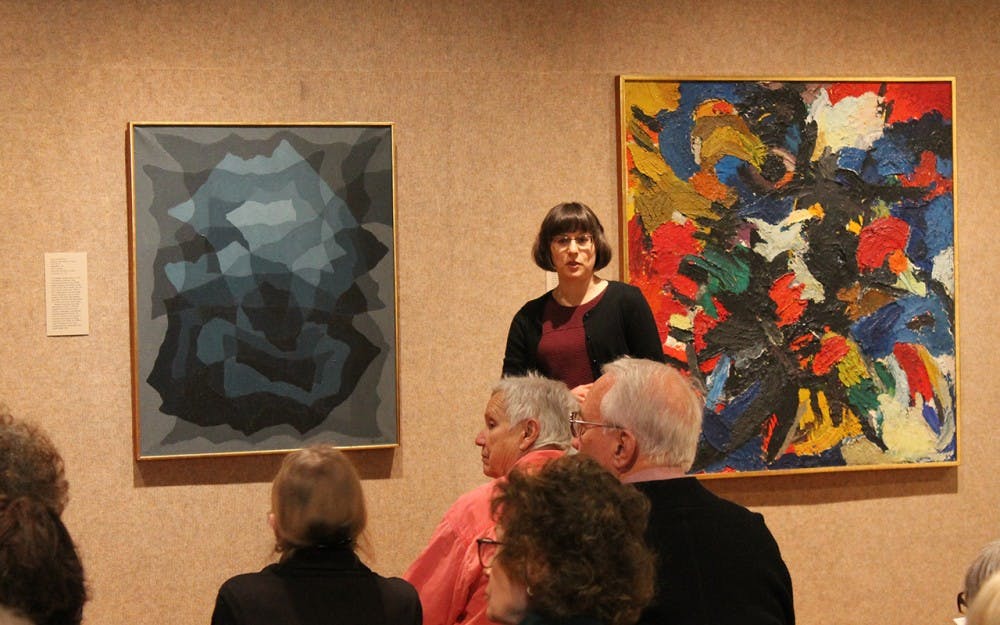The Eskenazi Museum of Art’s Jenny McComasspoke on Wednesday with Bloomington guests about modern art and post-war Germany as part of the museum’s latest Noon Talk.
McComas, curator of European and American Art, focused on the art of West Germany and its recovery after World War II.
“There was a feeling among the Allies that an anti-modern art attitude went hand in hand with holding onto ideas about fascism and to maintain racist, anti Semitic attitudes,” McComas said.
McComas said that in the time of the Third Reich, Adolf Hitler disliked modern art. Hitler was an artist who painted in a traditional style. His hatred set the tone for how art could be discussed in the time of the Third Reich.
“Hitler and those who handled the Nazi party’s propaganda described modern art as a disease that was infecting Germany and that Germany had to be cleansed of,” McComas said.
McComas said one of the reasons the Nazi party vilified German expressionism was the number of Jewish collectors and art dealers during the 1920s in the Weimar Republic. Hitler wanted to separate himself from them as much as possible.
During the 1920s, modern artists only had a few options, McComas said. The first was to emigrate, and the other was to stay in Germany. However, if the artist stayed in Germany they would have to switch styles or paint in private.
“These artists who stayed in Germany and chose to paint in a modern style in secret were often referred to as inner-emigration or inner-exile,” McComas said.
McComas said the first anti-modern art movement happened in 1933, the same year Hitler came to power in Germany. Most modern art professors at German art academies or curators that had acquired modern art were fired and replaced with Nazi party members.
“Modern art started to be showed in propaganda exhibitions that were called ‘exhibitions of shame,’” McComas said. “They were displayed in such a way with labels and propaganda slogans that were meant to convey the message to the audience that this art was un-German and opposed to Nazi ideology in all respects.”
McComas said this shame for modern art began in 1937 with the Degenerate Art Exhibition. The exhibition took place in Munich with about 600 works that had been removed from state-supported art museums in Germany.
This changed after the war when the Federal Republic used modern art as a political tool.
McComas finished her talk by discussing three specific artists in the exhibition: Ernst Wilhelm Nay, Fritz Winter and Willi Baumeister. These three men had all been forbidden to paint during the Nazi era.
McComas said these men had all been artists before, during and after World War II. Both Winter and Baumeister were a part of a group called Zen 49 that promoted contemporary art as a rejection of Nazi values. The Zen 49 group positioned itself as the heir to German expressionism.
McComas said the first exhibition of German post-war art came to the United States in 1951. The art was described as spirited by a press release. Most of the artists in the exhibitions were in their 40s an 50s.
“They were old enough to have been familiar with German expressionists and to have appreciated their work,” McComas said. “Some of these artists had actually studied with the major pre-war artists at schools such as the Bauhaus.”






